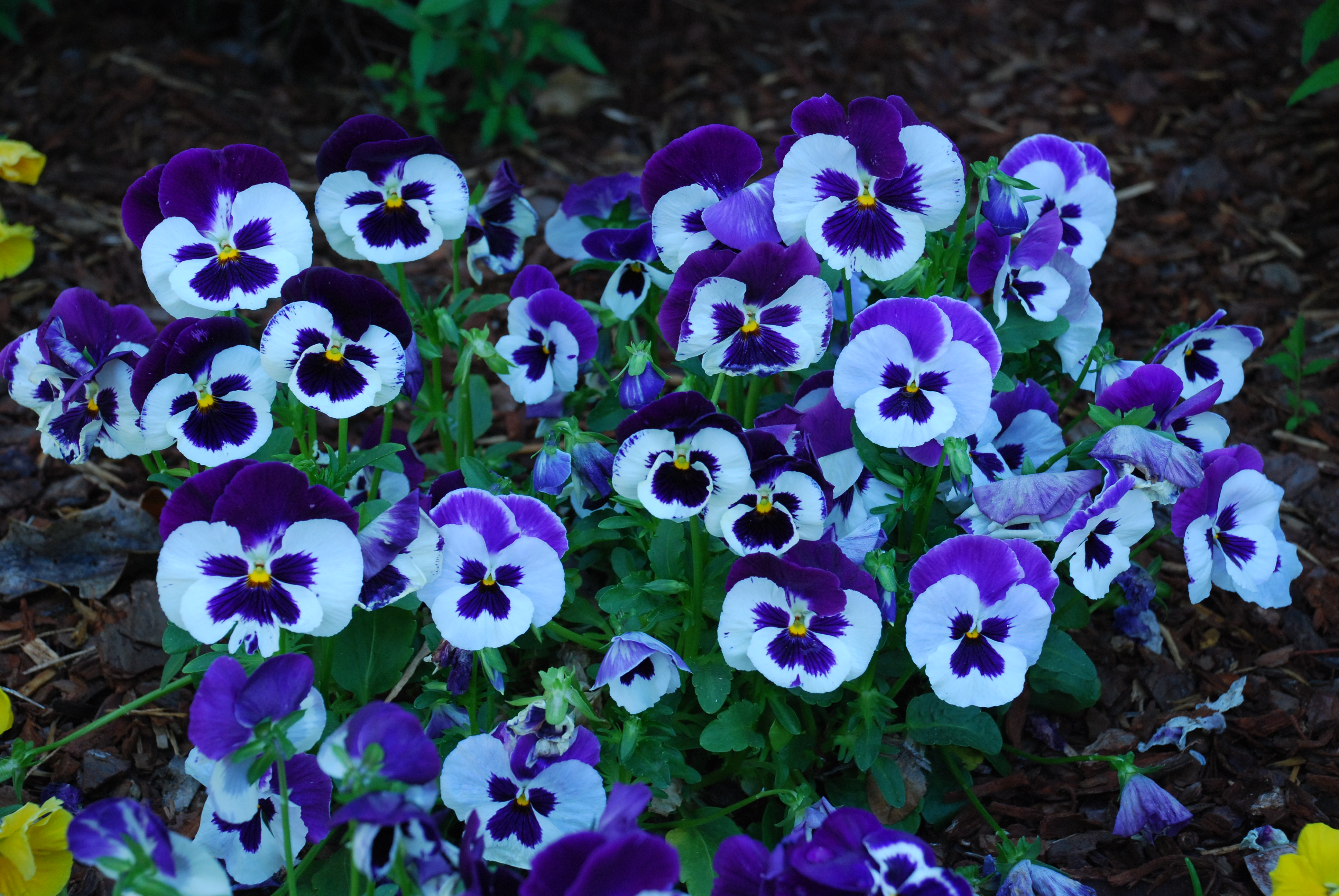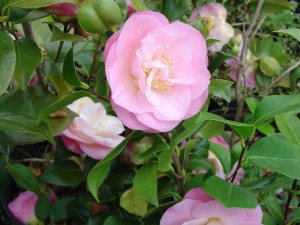Photo credit: Dr. Tom Ranney, NCSU Research Horticulturist Flowering quince (Chaenomeles spp) is an early spring flowering shrub, treasured for its brightly colored blooms (USDA hardiness zones 5-9). Old fashioned quince shrubs produced small amounts of fruits which were gathered and prepared into yummy jelly in the autumn kitchen. These often large 10-12 foot tall shrubs produced small sharp […]
Archive for the ‘Fertilizing plants’ Category
Winter Jasmine Rising
Is the worst of winter behind us? Winter jasmine (Jasminum nudiflorum) is often confused with forsythia shrubs which bloom 3-4 weeks later in the spring. This hardy winter blooming vine from China frequently blooms in late February and March when daytime temperatures climb into the mid-50s for a week or more. Evening chilling temps down into the […]
Revitalize Pansies Now

Across many areas of the Southern Appalachian region (USDA zones 6 and 7) snowfall has been plentiful this winter, but total rainfall is below normal. It takes 10 inches of snow to equal one inch of rainfall. Fall planted pansies and violas are now both hungry and thirsty. Provide them with a shot of fertilizer and water. […]
Opening Show in February- The Witchhazels
First, not to confuse you, our North American native witchhazel (Hamamelis virginiana) blooms in the fall. Our native vernal witchhazel (H. vernalis) has been flowering for the past few weeks. In February, the showiest witchhazels are opening now – species from China, Korea and Japan. Two of the very best are a Chinese species/cultivar called […]
Hardy Camellias for Southern Appalachian Region

Several camellias bloom reliably either in the fall and or early spring in most areas of Tennessee within USDA hardiness zone 6. In the colder higher elevations above 2000 feet, hardy camellias require some additional shelter to successfully bloom over 6 – 8 weeks. Flower colors range from white, many shades of pink, and red. […]
Culver’s Root (Veronicastrum)
Midwest native Culver’s root (Veronicastrum virginicum) starts the summer flowering season in my perennial garden. It naturally grows in open woods and meadows and thrives in fertile to moist soils. However, this deep rooted plant hasn’t complain about the current dry period in the Southern Appalachian region (USDA zones 6-7). Be aware that culver’s root […]
New Hardier Gardenias
Old fashioned gardenias or cape jasmines (Gardenia jasminoides) are reliably hardy in USDA zones 7-b and 8. Plants require immediate protection when the outdoor temperatures dip below 15 to 20 degrees. The new hardier cultivars are compact growers, 2-4 feet tall and 3-4 feet wide. ‘Frost Proof’, Crown Jewel™, and Heaven Scent™ are three promising […]
Growing Tomatoes in Containers
Apartment renters and townhouse and condominium owners till the soil in containers on their patio and deck. For containers the shorter growing determinate type tomatoes are a better choice. Spread out the harvest interval, by not planting all your tomatoes at one time. Start your last tomatoes from seed for June planting and harvest beginning […]
Growing Blueberries
Both the highbush and rabbiteye blueberry (Vaccinium spp.) are hardy in the Southern Appalachian region (zone 6-b to 7-a). A hot summer is a nemesis for highbush and an extremely cold winter limits where you can grow rabbiteye within zone 6-b. Blueberry bushes grow 8-15-feet tall, requiring annual pruning. Its dark green foliage turns brilliant […]

 Posted in
Posted in 
 Tags:
Tags: 
